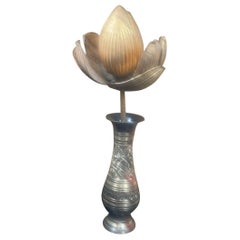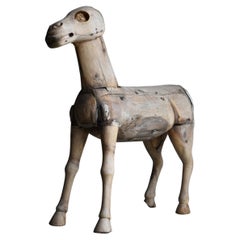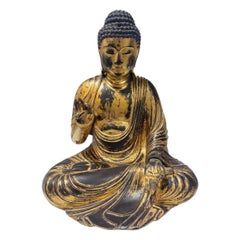Japanese Sculptures and Carvings
1840s Edo Antique Japanese Sculptures and Carvings
Wood
19th Century Meiji Antique Japanese Sculptures and Carvings
Bronze
Late 19th Century Edo Antique Japanese Sculptures and Carvings
Cedar
Late 19th Century Meiji Antique Japanese Sculptures and Carvings
Wood, Cedar
19th Century Edo Antique Japanese Sculptures and Carvings
Wood, Giltwood, Lacquer
Late 19th Century Meiji Antique Japanese Sculptures and Carvings
Bronze
19th Century Meiji Antique Japanese Sculptures and Carvings
Wood
19th Century Meiji Antique Japanese Sculptures and Carvings
Wood
Late 19th Century Meiji Antique Japanese Sculptures and Carvings
Cedar
Late 19th Century Meiji Antique Japanese Sculptures and Carvings
Cedar
Late 19th Century Meiji Antique Japanese Sculptures and Carvings
Cedar
Late 19th Century Meiji Antique Japanese Sculptures and Carvings
Bone, Hardwood
Late 19th Century Antique Japanese Sculptures and Carvings
Wood
1890s Meiji Antique Japanese Sculptures and Carvings
Wood
1840s Edo Antique Japanese Sculptures and Carvings
Wood
1890s Meiji Antique Japanese Sculptures and Carvings
Wood
Late 19th Century Edo Antique Japanese Sculptures and Carvings
Cedar
Late 19th Century Meiji Antique Japanese Sculptures and Carvings
Iron
Late 19th Century Antique Japanese Sculptures and Carvings
Wood
1890s Meiji Antique Japanese Sculptures and Carvings
Wood
19th Century Edo Antique Japanese Sculptures and Carvings
Paper
Early 19th Century Antique Japanese Sculptures and Carvings
Wood
Late 19th Century Meiji Antique Japanese Sculptures and Carvings
Wood
Late 19th Century Meiji Antique Japanese Sculptures and Carvings
Wood
Early 19th Century Edo Antique Japanese Sculptures and Carvings
Wood
Mid-19th Century Edo Antique Japanese Sculptures and Carvings
Wood, Boxwood
19th Century Edo Antique Japanese Sculptures and Carvings
Wood
Late 19th Century Edo Antique Japanese Sculptures and Carvings
Boxwood
1890s Meiji Antique Japanese Sculptures and Carvings
Boxwood, Lacquer
Late 19th Century Meiji Antique Japanese Sculptures and Carvings
Yew
Late 19th Century Edo Antique Japanese Sculptures and Carvings
Cedar
Late 19th Century Folk Art Antique Japanese Sculptures and Carvings
Iron
19th Century Edo Antique Japanese Sculptures and Carvings
Cedar
Mid-19th Century Antique Japanese Sculptures and Carvings
Terracotta
Late 19th Century Antique Japanese Sculptures and Carvings
Bronze, Silver Leaf
Mid-19th Century Meiji Antique Japanese Sculptures and Carvings
Porcelain
19th Century Antique Japanese Sculptures and Carvings
Bronze
Late 19th Century Meiji Antique Japanese Sculptures and Carvings
Bronze
1860s Edo Antique Japanese Sculptures and Carvings
Wood
Late 19th Century Meiji Antique Japanese Sculptures and Carvings
Boxwood
19th Century Meiji Antique Japanese Sculptures and Carvings
Wood
Late 19th Century Edo Antique Japanese Sculptures and Carvings
Cedar
Late 19th Century Antique Japanese Sculptures and Carvings
Wood
19th Century Japonisme Antique Japanese Sculptures and Carvings
Wood, Lacquer, Paint
1880s Meiji Antique Japanese Sculptures and Carvings
Wood
19th Century Edo Antique Japanese Sculptures and Carvings
Gold Leaf
19th Century Meiji Antique Japanese Sculptures and Carvings
Bronze, Copper
19th Century Meiji Antique Japanese Sculptures and Carvings
Bronze, Copper, Sterling Silver, Gold
19th Century Edo Antique Japanese Sculptures and Carvings
Wood
19th Century Meiji Antique Japanese Sculptures and Carvings
Fabric
Mid-19th Century Edo Antique Japanese Sculptures and Carvings
Wood, Lacquer
Late 19th Century Japonisme Antique Japanese Sculptures and Carvings
Bone, Mother-of-Pearl, Lacquer, Shell
Late 19th Century Antique Japanese Sculptures and Carvings
Wood
19th Century Antique Japanese Sculptures and Carvings
Gold Leaf
19th Century Antique Japanese Sculptures and Carvings
Wood
Late 19th Century Japonisme Antique Japanese Sculptures and Carvings
Wood, Lacquer
Late 19th Century Antique Japanese Sculptures and Carvings
Wood
19th Century Japonisme Antique Japanese Sculptures and Carvings
Wood, Lacquer
Read More
12 Calming Spaces Inspired by Japanese Design
From cherry-blossom-adorned walls paired with glamorous lighting to wood-paneled ceilings above checkerboard-patterned chairs, these 12 spaces seamlessly blend Eastern and Western aesthetics.
Rodrigo Rivero Lake’s Mexico City Showroom Is a Museum-Worthy Trove of Spanish Colonial and Asian Antiques
The dealer and curator has spent the past 50 years amassing a collection of exceptional art, furniture and architectural elements that trace the cultural influence of the Spanish empire from Europe to the Americas and beyond.




